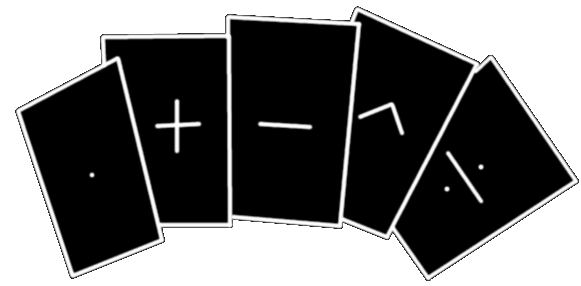Irrational Holes
Let’s do a magic trick … choose your favorite math basic operation (multiplication, addition, subtraction, power and division).

Now I will take an X and a Y from this deck of infinite Irrational Numbers and perform the operation you chose from X with Y.
Voala! I was going through the deck of infinite Irrational Numbers, but the result appeared in that other deck out there, that of infinite Rational Numbers. Surprising, don’t you think? Operate two Irrational Numbers and the result is not an Irrational Number?
This trick only works with the set of Irrational Numbers because it is not closed to any of these five operators (multiplication, addition, subtraction, power and division). Let’s talk a little bit about the concept of a numerical set not being closed to an operator … let’s start with something simpler, like Natural Numbers.
The set of Natural Numbers is closed to the addition, multiplication or power operators. This means that, choosing ANY of these operations, for ANY two Natural Numbers that decide to operate them, the result will always fall in the Natural Numbers. But for subtraction and division operations, this set is not closed … this means that although there are Natural Numbers whose subtraction of one by the other, or the division of one by the other, fall in the Natural Numbers, THERE ARE Natural Numbers that operated with the subtraction or with the division, they fall outside the Natural Numbers. Like for example:
3-5=-2 (belongs to the set of Integers numbers)
3/5=0,6 (belongs to the set of Rational numbers)
Now if we think about the set of Integers, it is closed to the addition, multiplication and subtraction operators … that is, choosing ANY of these operations, for ANY two Integers that decide to operate them, the result will always fall in the Integers. But for division and power operations, this set is not closed (that’s right, the Natural Numbers were closed for the power operator, but the Whole Numbers are not) … this means that although there are Whole Numbers whose division from one to the other , or the power of each other, fall in the Whole Numbers, THERE ARE Whole Numbers that operated with the subtraction or division, fall outside the Whole Numbers. Like for example:
½ =0,5 (belongs to the set of Rational numbers)
2(-1)=0,5 (belongs to the set of Rational numbers)
Now if we think about the set of Rational Numbers, it is closed to the addition, multiplication, subtraction and division operators… that is, choosing ANY of these operations, for ANY two Rational Numbers (except the 0 in the Division Quotient, for which the division is undefined) who decides to operate them, the result will always fall in the Rational Numbers. But for power operations, this set is not closed … this means that although there are Rational Numbers whose power falls from one to the other in Rational Numbers, THERE ARE Rational Numbers that operated with the power, fall outside Rational Numbers. Like for example:
2(1/2) = √2 (belongs to Irrational Numbers)
Now if we think about the set of Irrational Numbers, it is not closed to any of the addition, multiplication, subtraction, division or power operators … this means that although there are Irrational Numbers whose results for each other in these operations fall into the Irrational Numbers, THERE ARE Irrational Numbers whose results for each other in these operations fall outside the Irrational Numbers. It is at this point that our trick presented at the beginning of the chapter permeates, for any chosen operator, we take an X and a Y within the Irrational Numbers that in this operation, the result gives a Rational Number. Like for example:
√2 – √2 = 0 -√2 + √2 = 0 | √2.√2 = 2 √2/√2 = 1 |
To show that Irrational Numbers are not closed for power, we need a small demonstration:
If √2√2 belongs to Rational Numbers, then ok, we have our result within Rational Numbers. Otherwise, √2√2 must be an Irrational Number, in this case (√2√2)√2 = √22 = 2.

